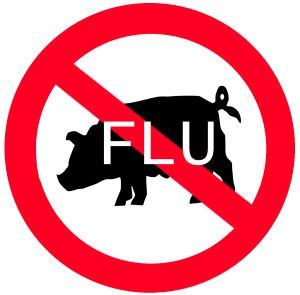 The Mexican government, in its latest move to lure travelers back, is offering a free health insurance program for all visitors which will offer emergency medical care coverage, hospital stays, prescription drugs and ambulance services in the event that they contract the H1N1 virus, better known as swine flu.
The Mexican government, in its latest move to lure travelers back, is offering a free health insurance program for all visitors which will offer emergency medical care coverage, hospital stays, prescription drugs and ambulance services in the event that they contract the H1N1 virus, better known as swine flu.
Although swine flu has long since spread from Mexico to the furthest corners of the Earth, the country is still dealing with the stigma of the disease and tourists are staying away.
“We want to send the message that Mexico City is a secure place that will protect its visitors,” said Alejandro Rojas Díaz, Mexico City’s tourism secretary, during an unveiling ceremony on Tuesday.
Sick tourists can access the insurance, dubbed the “Tourist Assistance Card,” by calling a toll-free phone number which connects them to a call center staffed with multi-lingual operators. Deductibles may apply in some cases, and patients must get treatment at “authorized” establishments.
Get the latest updates on Mexico travel in our Mexico & Central America Travel section.
Related links on PeterGreenberg.com:
- Ask the Locals: Riviera Maya, Mexico
- Time to Travel to Mexico? Travel Detective Says Yes
- The Travel Detective’s Cinco de Mayo Swine Flu Update
- Swine Flu Updates: Mexico City Slowly Reopens, More Cases In the US
- Travel Industry Responds Angrily to Biden’s Comments
- The Travel Detective Responds to Joe Biden and the Swine Flu “Infodemic”
- The Travel Detective’s Advice on Swine Flu & Travel
- More Governments, Travel Companies React to Swine Flu Outbreak
- Swine Flu Outbreak Causes Rise in Pandemic Alert Level
- Swine Flu Outbreak Prompts Worldwide Travel Warnings, Casts Gloom Over Industry
 Even better, the insurance, which is being offered through a private company called MAPFRE, is available for any type of medical emergency, from car accidents to sprained ankles. It also offers assistance to travelers who lose their passports or who simply need advice over the phone.
Even better, the insurance, which is being offered through a private company called MAPFRE, is available for any type of medical emergency, from car accidents to sprained ankles. It also offers assistance to travelers who lose their passports or who simply need advice over the phone.
It is too early to say whether the scheme will reassure tourists enough to get them to come back in high enough numbers to save Mexico’s economy. By some estimates, Mexico has lost over $2 billion dollars to the swine flu epidemic, which caused a rash of hotel and airline cancellations over the past three months and caused hotel occupancy to drop to a stunning 20 percent in many places.
Foreign tourists have also been spooked by the drug-fueled violence of Mexico’s border cities, which has killed over 9,000 people in the last 18 months. Although neither flu nor the drug violence have impacted the country’s resort towns, visitors have stayed away to such an extent that places like Cancun and Puerto Vallarta have become virtual ghost towns.
Find out more about how Mexico Tourism Uses Deep Discounts to Lure Travelers Back.
 The Mexican government has been working hard to overcome its reputation as a hotbed of H1N1, the virus which has now infected and killed more people in the United States than in the country where it originated.
The Mexican government has been working hard to overcome its reputation as a hotbed of H1N1, the virus which has now infected and killed more people in the United States than in the country where it originated.
On Friday the CDC reported that there have been 43,771 confirmed cases of H1N1 infection in the United States and 302 deaths since the epidemic began in April. However, officials suspect that the infection rate is actually as high as one million.
Mexico, on the other hand, has a current death toll of 138, with approximately 14,800 recorded cases. So, statistically an American is more likely to get infected with the virus at home in the U.S. than they would be while on vacation in Mexico.
To lure people south of the border the Mexican Tourism Board recently launched a $90 million dollar television and print ad campaign featuring celebrities and scenes of the country’s beautiful beaches, ruins and nightlife.
Many resorts are also offering huge incentives and gimmicks to get visitors to come. In May dozens of hotels on Mexico’s Caribbean coast participated in a swine flu “guarantee” program, where they pledged to give free future vacations to any tourists who caught swine flu while staying in the region.
In other swine flu news, European Union transport officials said Thursday that airlines cannot arbitrarily bar passengers from flights if they are suspected of having the virus. They only way they can prevent a potentially sick passenger from boarding is with orders from a public health authority, or a medical certificate.
The EU made the decision based on recommendations from the World Health Organization, which has said that it makes little sense to impose travel restrictions since carriers of the H1N1 virus often do not show symptoms until days after exposure.
By Karen Elowitt for PeterGreenberg.com.
Related links: Los Angeles Times, New York Times, Newsweek, Xinhua, US News & World Report, Telegraph (UK), Luxist.com, Associated Press
Related links on PeterGreenberg.com:
- Ask the Locals: Riviera Maya, Mexico
- Time to Travel to Mexico? Travel Detective Says Yes
- The Travel Detective’s Cinco de Mayo Swine Flu Update
- Swine Flu Updates: Mexico City Slowly Reopens, More Cases In the US
- Travel Industry Responds Angrily to Biden’s Comments
- The Travel Detective Responds to Joe Biden and the Swine Flu “Infodemic”
- The Travel Detective’s Advice on Swine Flu & Travel
- More Governments, Travel Companies React to Swine Flu Outbreak
- Swine Flu Outbreak Causes Rise in Pandemic Alert Level
- Swine Flu Outbreak Prompts Worldwide Travel Warnings, Casts Gloom Over Industry












